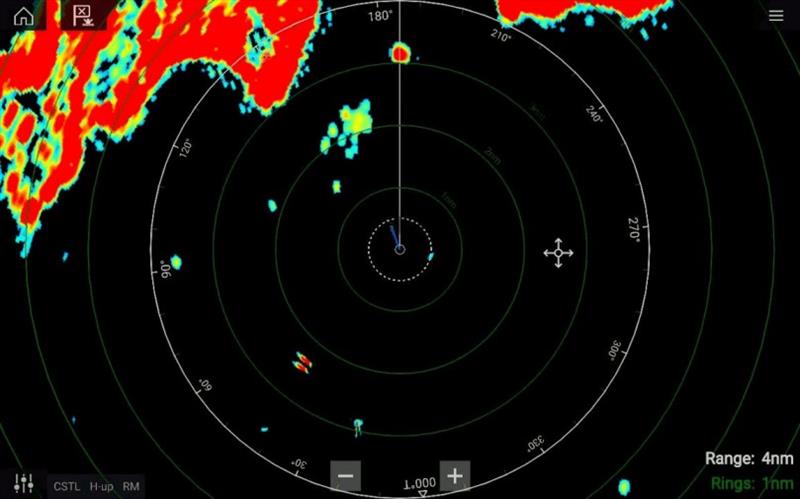
Global Solo Challenge: Radar on sailboats - making the most of it and using it safely
by Global Solo Challenge 28 Aug 2021 05:23 PDT

Radar display - 4 miles range © Global Solo Challenge
What is a Radar
The word radar is an acronym coined by the US Navy at the beginning of World War II with the meaning of "Radio Detection And Ranging". Its application for military purposes has spread over time, also finding diffusion in the civil field in aviation and in the nautical sector.
This tool provides two pieces of information, the distance and the angle relative to our position of any solid object or surface in the range of our antenna. The principle of operation is not conceptually different from the mechanism that allows bats to fly and hunt in the dark. The bat emits ultrasounds and perceives its own sound waves reflected from its surroundings. He is thus able to mentally reconstruct the map of the cave in which he is flying and the location of the insects he is hunting.
The device, instead of emitting ultrasounds, emits radio waves through a rotating antenna. In addition to emitting, it receives the reflected waves of surrounding objects. Knowing the angle relative to the boat of the rotating antenna at the moment of transmission, you can know the distance and angle. This is by calculating the time it takes for the reflection to return. A computer then transforms this information into an image visible and understandable to the human eye which is presented on the display.
What's it for?
It is a precious navigation aid, especially in situations of reduced visibility. It can be used to know the position and distance of other boats, other obstructions such as rocks and buoys and the coast. For example, in fog, radar can be used to avoid collisions. Not only that, also to find the mouth of a port or the shape of a breakwater. Sound alarms can be activated on each device to warn us of the presence of ships or obstacles approaching relative to our position.
It is very effective for monitoring the movement of another ship and safely assessing whether we are at risk of collision. With the naked eye, even in broad daylight and with good visibility, it can be difficult to assess the true distance of a fishing boat. Being able to understand in which direction it is moving and if you need to manoeuvre to avoid it. Radar can make these situations less stressful. At night and in case of fog it can become an essential tool to ensure safe navigation.
Equipment for civil use
The instrument for civil use, simplifying to the extreme, is composed of a transmitter, a rotating antenna, a receiver, a processor and a display. The rotating antenna is often only one and is used both for the transmission of impulses and for the reception of reflections. All devices have a rotating antenna. In the dome radars typical of small fishing boats and other boats, the rotating antenna is hidden under the plastic cover of the dome.
Every wave transmitted by the radar that is reflected by a distant object returns very weak, some surfaces and materials reflect better than others. The metal surfaces of a ferry reflect well, but the fiberglass of a boat does not reflect at all.
In addition to the properties of the various materials, it is necessary to simply consider the power of our instrument, a crucial factor that determines its range. Power also means electricity consumption and inevitably the instruments installed on sailboats are not very powerful. They have a typical rated range of up to 16 miles but perform best in the 3 to 6 mile range. It may not seem like much but it is perfectly adequate in order to assist in navigation in conditions of reduced visibility.
Continue reading the full article here...